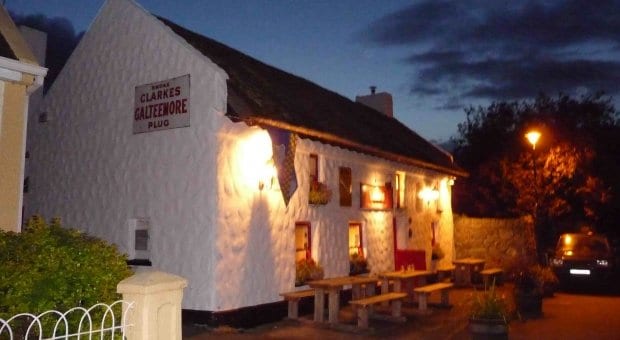
Traditional Irish pub Credit: Aefa Mulholland
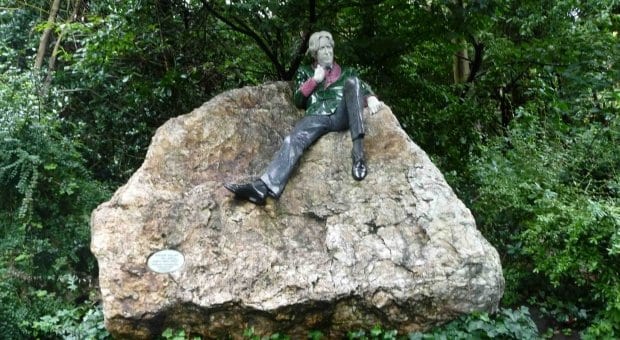
Statue of Oscar Wilde in Dublin Credit: Aefa Mulholland
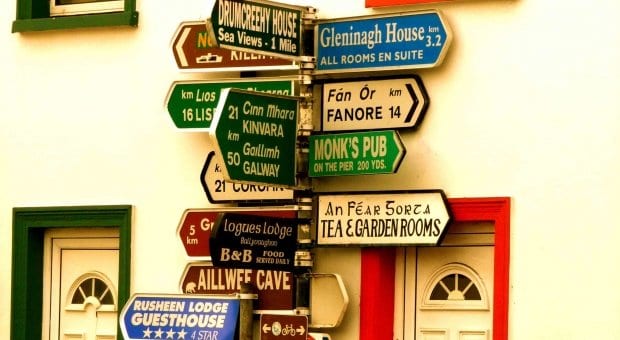
Irish crossroads Credit: Aefa Mulholland
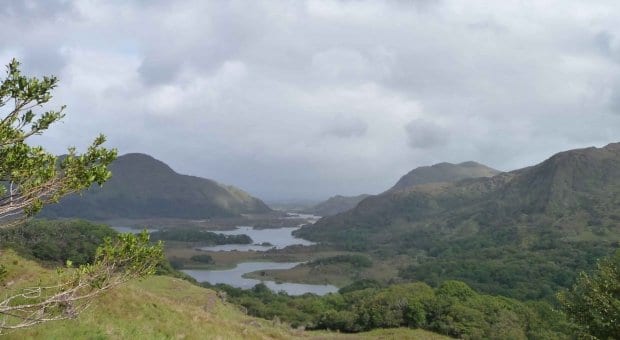
Overlooking County Kerry Credit: Aefa Mulholland
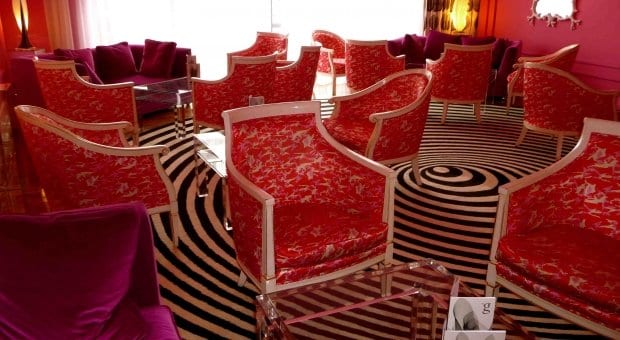
The G Hotel Credit: Aefa Mulholland

Credit: Aefa Mulholland
Ireland’s most flamboyant son Oscar Wilde once stated that “Life is too important to be taken seriously” and it’s a philosophy that the 6.5 million inhabitants of this 280 by 486-mile isle really do seem to live by. Although that philosophy has been somewhat reigned in by the recession that has ravaged the economic upswing known as the Celtic Tiger, you just can’t cage this kind of character. As history has proved, over and over, the Emerald Isle is resilient.
But looking at the litany of tasty bar and restaurant openings in Dublin in the last couple of years, such as 777 Mexican restaurant and tequileria, Ukiyo Japanese late night bar and lunch spot, slick sushi 65-seater Super Miss Sue or any of the popular Jo’burger start-ups (Skinflint, Crackbird, Bear), you’d be excused for wondering if the recession really struck such a direct hit after all. You’ll also find people who don’t bemoan some of the knock-on effects of this stark return to reality. As in other recession-hit parts of Europe, the financial downfall has forced a shift in focus and a return to a celebration of the small, the artisan and the quirky. A bowler-hatted street market called The Ferocious Mingle Marcade, Brazilian street food or a 1960’s Parisian wedding dress, anyone? They’re all recent recession-era arrivals.
If it’s your first visit to Ireland, you’ll want to sort through the cliches and discard a few. Keep the ones that cover talkative locals, enthusiastic alcohol consumption, largely liquid weather, impossibly green fields, a pleasing scattering of donkeys and the odd thatched cottage, but chuck out any outdated ideas you might have about it being a place where LGBT folks have to cower in closets. Repressed, religious Ireland is now something of a relic — in the cities, at least. Dublin boasts a bevy of LGBT bars and clubs, and smaller cities around the country have bars, clubs and homo social shenanigans that might surprise you. LGBT people are now very much part of mainstream life in Ireland. In fact, the favourite for the last presidential election, Senator David Norris, is an out gay politician and gay and civil rights activist, credited with single-handedly wrestling the country’s anti-homosexual laws off the books back in 1988.
Pick your own Ireland. For history, hip bars and eateries and a cosmopolitan, urban take on the place, go to Dublin. If you want a more laid-back pace, but still want access to some of Europe’s finest restaurants, head south to Cork city and surrounding areas. For dramatic rugged scenery, traditional music and ancient pubs, go west to Galway. In between, you’ll discover postcard-perfect scenery; crumbling castles and ruined cottages, misty hills, towering hedges dripping with hot pink fuchsia and pubs that haven’t changed in 200 years.
Dublin is the start point for most Irish odysseys. It’s a wonderful mixture of cosmopolitan big city, small town friendliness and laid-back humour. You can easily soak up its flavour by sauntering from the 1670 Stephen’s Green, down shopping street Grafton Street, through Oscar Wilde’s alma mater Trinity College, past the gay-adored arthouse Irish Film Institute and the myriad crammed pubs of Temple Bar to Christchurch Cathedral, founded in 1028. For a historic angle on this thousand-year-old city, visit the grounds of administrative centre Dublin Castle, the eery cells and execution sites of Kilmainham Gaol and the bullet-scarred GPO, centre of the bloody 1916 Easter Rising. For an artistic introduction to Dublin, start with the National Gallery on Merrion Square, progress to the Hugh Lane Gallery — home of an impressive Impressionist collection and the studio of gay figurative painter Francis Bacon. Next discover the incredible Asian art collection at hidden gem Chester Beatty Library in Dublin Castle and finish at the Irish Museum of Modern Art in the fine 17th-century Royal Hospital building in Kilmainham. For a more liquid take on history, visit the Guinness Storehouse or the equally central Jameson Distillery in gentrifying, former horse market Smithfield. To get away from the crowds, board the swift DART train and walk along cliffs and through old village streets in coastal neighbourhoods, Dalkey in the south or Howth in the north.
Ireland’s compact second city, Cork, boasts a population of 250,000, a friendly bar, restaurant and theatre scene and an eminently walkable city centre. It’s filled with worthwhile sites from the Gothic St. Fin Barre’s Cathedral to the venerable, covered English Market, which has been parcelling up portions of organic salmon, sausages and artisan cheese since 1610. Just beyond the city lie the legendary gastrodestinations of West Cork. The village of Kinsale is perhaps the most delicious. Book ahead for famed Fishy Fishy Cafe. Drive on along twisting roads and see Ireland’s highest peaks, MacGillicuddy’s Reeks, off to the north, as you weave through charming towns such as Clonakilty, Skibbereen, Bantry, and bustling Kenmare. Killarney National Park, home of the lofty 1,038-metre Carrauntoohil, the dramatic Dingle Peninsula and the small County Kerry cities of Tralee and Killarney are just beyond.
If driving to Galway from Cork, plan your route to peer over County Clare’s 700-feet-high, five-mile-long sandstone and shale Cliffs of Moher. A seaside city with a reputation for stellar seafood, stomping traditional pubs and a spectacular arts scene, diminutive Galway is like the best of Ireland bundled up into a bite-sized portion. Get a taste for it by sauntering cobbled city centre streets down past the dark, rushing River Corrib — always liberally confettied with swans — past streets with creative names such as Shop Street (it’s the one with shops on it) and Nun’s Island (it’s an island where nuns used to live) and to the remains of the 16th century city walls at the Spanish Arch. Other than wrapping up warm and admiring the faded 1950s resort of Salthill and its 2-kilometre beach, Galway is not so much about what to see as what to do. Perfect Galway activities include devouring fresh Galway Bay clams or wild Atlantic salmon at Ard Bia (www.ardbia.com), drinking pints by a roaring fire in an ancient pub such as the labyrinthine Quays Pub or catching an incredible play at the Druid Theatre.
Bars
Bar and club the George is the Dublin scene stalwart. Cruisy, packed and crammed with both men and women, this is the one you have to cheek out at least once on a visit. A few doors further up South Great George’s Street, The Dragon is the younger pretender on the strip. Having gone through more name changes than an indecisive drag queen, Pantibar is the third main LGBT venue in the city. Named for — and ruled by — the infamous Panti Claws, it’s just across the bridge from Temple Bar and the stylish, LGBT-frequented Front Lounge, a mixed straight-gay venue where everyone from Morrissey to Sandra Bernhard has been spotted among the classic faux-Grecian columns.
Galway LGBT-bars are a bit like the crock of gold at the end of the rainbow; no longer there when you get to where they’re supposed to be. The latest one to flicker into life, G Bar and Club Buddha opened in November 2012. For traditional Irish pubs, try Tigh Neachtain, former haunt of gay poet Allen Ginsberg, or the atmospheric Quays Pub.
In Cork the central Loafer’s Bar is the main LGBT spot in town, with a calendar packed with bingo, karaoke and Texas Holdem (well, it is the south…) They also have decent pizzas and a garden for when the weather cooperates. Also central, Ruby Lounge on Washington Street is the other cheerful LGBT hangout. The gorgeous, elegant Bodega is a mixed LGBT-straight restaurant-bar-club in the historic St.Peter’s Market building.
Accommodations
In Dublin, the Morrison is an upscale spot, perched on the north side of the river at the Millennium Bridge. It’s ideally placed for Temple Bar, city centre restaurants and LGBT bars. Number 31 is a hidden Georgian gem, a stroll away from Stephen’s Green. Entered via a lane off Leeson Street, it’s the accommodation of choice for low key celebrities and fans of Georgian architecture. The five-star Dylan is an elegant design hotel with impeccable service and a handy location, ten minutes walk from the traffic congested bustle of Stephen’s Green.
Galway’s 101-room G Hotel was designed by Philip Treacy, gay milliner to the stars and is one of his most fanciful creations. It’s a 15-minute walk from Shop Street and the bars. More centrally, the gay-friendly Harbour Hotel is a great choice if you want to avoid cars or cabs.
Cork
For understated elegance, plus several acres of grounds and a delectable restaurant, Hayfield Manor Hotel is 10 minutes walk from the centre. For something more central, the two delightful townhouse rooms above legendary eatery Cafe Paradiso couldn’t be more convenient — or have better continental breakfast.
For more insight into Cork and helpful travel advice, see our gay Cork city guide
For map locations and website links to more than 35 places of interest, see our gay Cork listings pages
For more insight into Dublin and helpful travel advice, see our gay Dublin city guide
For map locations and website links to more than 70 places of interest, see our gay Dublin listings pages
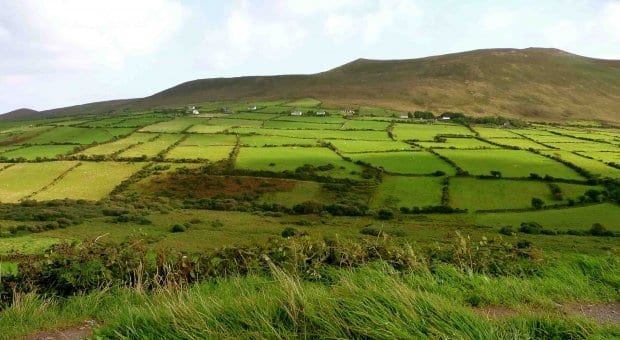
 Why you can trust Xtra
Why you can trust Xtra